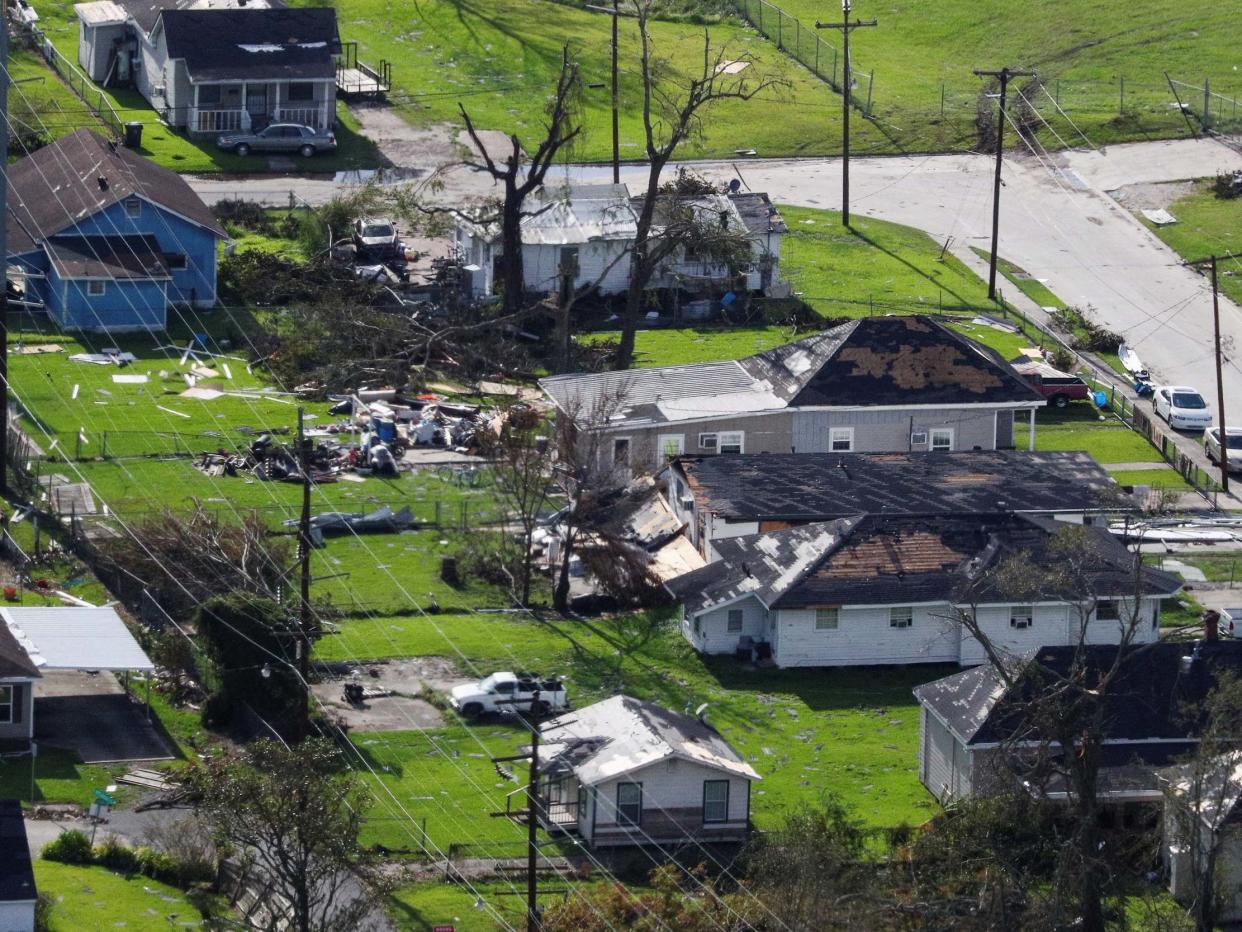Louisiana hit by life-threatening heatwave in Hurricane Laura's aftermath

The recovery effort from Hurricane Laura, which slammed into Louisiana last week, is being further complicated by a life-threatening heatwave that has hit the state and neighbouring regions.
A heat advisory was issued on Monday by the National Weather Service for Southeast Texas and portions of Southwest Louisiana. The temperature was expected to feel like 103F (39.4C) even rising to 110F (43.3C), according to the heat index.
"The combination of hot temperatures and high humidity will combine to create a situation in which heat illnesses are possible," the warning read, telling residents to drink plenty of fluids, stay in air-conditioned rooms, out of the sun and check up on relatives and neighbours.
The advisory, however, would be near impossible to follow for those in hard-hit areas, many of whom are without water, power to run air-conditioning units and are returning to homes which may have been destroyed or structurally damaged in the storm.
The Weather Channel issued a warning on generators to those using them to power ACs, lights and fridges, noting that they must be kept outside on dry ground.
So far 18 deaths in Texas and Louisiana have been attributed to the storm; more than half of those people were killed by carbon monoxide poisoning from the unsafe operation of generators.
The Category-4 hurricane, which made landfall on Thursday just south of Lake Charles near Cameron, Louisiana, packed 150-mph (240-kph) winds and a storm surge that officials said was as high as 15 feet (4.5 metres) in some areas.
Louisiana Governor John Bel Edwards on Monday warned that residents were in for a long recovery, with 324,000 power outages across the state and hundreds of thousands of people without water entirely or under boil water advisories.
“This is going to be a very difficult storm to recover from,” the governor said. Crews were starting to take chainsaws to fallen trees and patch roofs, but most homes in Lake Charles wrecked by the storm were still untouched.
It has been a summer of intense heatwaves across the US. Earlier this month, it is believed that the highest temperature ever recorded on Earth – 130F (54.4C) - was hit in Death Valley, California.
More than 600 people in the US are killed by extreme heat every year, according to the Centers for Disease Control and Prevention (CDC), more than any other weather event.
Extreme heat also impacts infrastructure, another potential obstruction to recovery. Heatwaves can lead to blackouts due to overworked power grids, melting roads, grounded aircraft and dangerously hot conditions inside of cars.
The climate crisis is driving up global temperatures. In the US, the federal, National Climate Assessment estimates that there will be around 30 more days over 90F in most areas by 2050.
AP contributed to this report
Read more
Lt. General who led Katrina ops warns of risk from more hurricanes
Trump tells hurricane emergency responders to sell his autograph
Trump rages at 'unstable' niece on way to inspect hurricane damage

 Yahoo News
Yahoo News 
